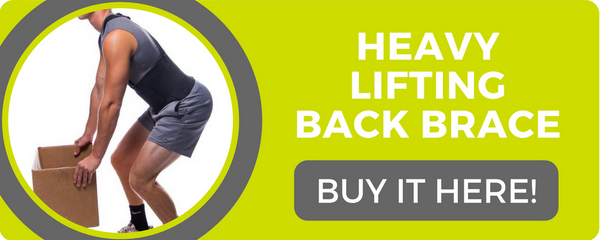7 Techniques for Lifting Heavy Objects Without Hurting Your Back
There are many reasons why you should practice proper lifting techniques. Not only does proper form work the appropriate muscle groups you’re aiming to strengthen, but it also reduces the risk of both short and long-term back injuries. Whether you’re lifting weights, strength training, or carrying heavy objects on the job, your form is extremely important for your overall health. Bad, improper form while lifting can cause muscle strains, tears, serious back problems, joint pain, and much more. These injuries can take weeks or even months to heal properly. One of the main causes of lower back pain is sprains and strains to the low back. This accounts for most acute back pain individuals experience in their lifetime. Sprains and strains are often caused by overstretching or tearing ligaments, which often occur from lifting an object improperly or something too heavy. Practicing proper form throughout your lifting exercises leads to better results, prevents injury, and allows your muscles to work harder to increase overall strength. We’ve compiled a list of tips and tricks to keep in mind the next time you’re lifting a heavy object:
1)
Before lifting the heavy object, make sure to keep a wide base of support. Always make sure your feet are shoulder-width apart, with one foot slightly ahead of the other. This will ensure good, proper balance during your heavy lift. We call this the Karate Stance.
2)

When you are ready to lift the object, simply squat down as close to the object as possible, bending at the hips and knees with your buttocks out. If the object is extremely heavy, you may want to put one knee to the floor and your other knee in front of you bent at a right angle.
3)

As you begin your lift upward, make sure to keep good posture. Do so by looking straight ahead, keeping your back straight, your chest out, and your shoulders back. Having poor posture can lead to not only back pain, but migraines, lower energy levels, and even heart problems. This form will help keep your upper back straight while having a slight arch in your lower back at the same time. If you believe you have bad posture, try wearing a posture brace daily to help train your shoulder, back, and abdomen muscles to sit up straight.
4)


Slowly lift the object by straightening your hips and knees (not your back). Extend your legs and breathe out as you lift. Do not twist your body or bend forward as you lift the heavy object.
5)


Hold the heavy object as close to your body as possible, at the level of your belly button. (In the Power Zone) Never lift a heavy object above your shoulders or with your arms extended outward.
6)

Use your feet (not your body) to change direction, taking slow, small steps. Lead with your hips as you change direction. Keep your shoulders in line with your hips as you move.
7)

Set down the heavy object carefully, squatting with your knees and hips only.
Pairing these techniques with our Back Brace for Heavy Lifting will allow for the safest, most efficient heavy lifts. This unique lifting back belt encourages proper lifting techniques and prevents the damage associated with improper lifting. This back belt does so by compressing the lower back during heavy lifts. The compression allows for more stability in your abdomen and lower back. This increase in stability will allow your lower back to carry more weight and prevent injury to this area as well. Looking for other back braces to help support your lower, middle, or upper back? Check out our wide selection of supports!
As noted in step 5, to avoid injury, you should always lift in the power zone. The power zone for lifting is close to the body, between mid-thigh and mid-chest height. This zone is ideal for lifting because it’s where the arms and back can lift the most with the least amount of effort. The power zone, also known as the “comfort zone”, minimizes excessive reach and ensures a neutral position during heavy lifts. Lifting in the power zone reduces the risk of injury, while also allowing for more efficient and pain-free lifting.
Here is a quick reference listing the "Do's and Don'ts" of lifting heavy objects. Print it out and keep it nearby the next time you're performing heavy lifts!













